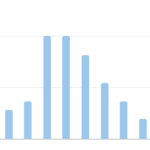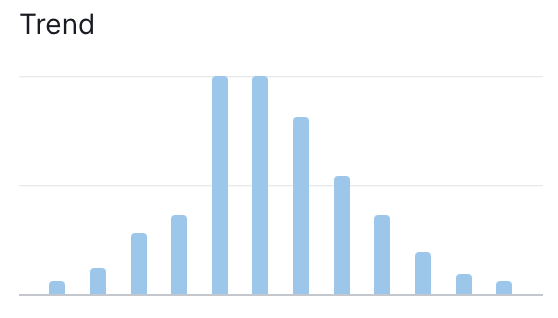The secret to keywords isn’t about which ones to use, but when.
Using the right keywords are vital to the success of a site. This is not a secret, it’s something we all know. Matching site content to the terms that people use when search for products and topics is a major site strategy. If you get that wrong, no one finds your content, no one finds your site.
But there is another important aspect of keyword use that doesn’t get enough attention, and it could be the unknown secret to how you use keywords. Many seem to undervalue the importance of when to use a keyword. It is entirely possible to choose the correct keywords, yet get SEO or traffic value because the keywords were used at the wrong time.
Many keywords flex in popularity through the course of a year. There is a natural ebb and flow to keyword searches that is very important to how successful your SEO and SEM. In fact, in some industries, keywords swing in popularity wildly–some months driving lots of traffic, others months, just a trickle.
Keywords have seasons. Make sure you use the right one at the right time.
After a long grey Ohio winter, I greatly look forward to folding down the soft top on my Jeep Wrangler and taking the doors off. After not bothering with the doors for months, I have to remind myself the process of taking them off quickly, and how to lower and fold away the soft top. As a search guy, this sparked my curiosity. I was curious how many people are hitting search engines and YouTube to refresh their memory.

Searches begin to creep upwards in February, but it’s all about the last week of March.
This is an extremely clear example of a keyword or key phrase can be invisible during some parts of the year, and drive tons of traffic to your site during others.
But only if you are keeping track of keyword trends and mapping your search strategy to them.
It doesn’t matter whether or not your business has anything to do with Jeeps. The process for finding keyword trends and maximizing the effect is the same. There are a few good ways to find keyword trends. Here are a few options.
How to Find Keyword Trends
Using SEMRush to find Keyword Trends
SEMRush is a goldmine of information on all sorts of keyword data. In this case you’ll want to use the Keyword Analytics section of SEMRush. After you type in a target keyword at the top, it will provide all sorts of information to help you start making decisions on if, how and when to use that term. The straight-forward interface shows you the search volume, the number of results that shop up in SERPs, the average CPC, and will show you related searches for additional ideas.

But, in this case, the part we are interested in is the trend. There is a significant difference in searches from Spring, through Summer and into Fall.
Using SEMRush, you can get a lot of keyword information that you can quickly tie together to get a complete picture on a term. It will show how competitive the term is and many related searches. It will also show the op organic results, which is great for evaluating what types of content is already online for that search term.
Even without the many deep diving features SEMRush offers, you can see in a quick glance if a keyword is worth pursuing, and when to pursue it.
Pros
- Shows keywords trends clearly
- Shows keyword search volume
- Shows related keywords
- Allows for keyword analysis in a myriad of other ways
Cons
- Not free
Using Google Trends to find Keywords Trends
This is often the go-to for finding keyword trends, but it’s also generally the least helpful. Yes, it will give you an idea of trend information, but it’s better sorted for topics, not specific keywords. And there are few options to further analyze a keyword, or similar keywords, in the way that SEMRush provides. But, the biggest upside is that it’s free.
The most helpful feature here is the way you can slice up time. This is helpful if an term is highly subjected to trending–like a newsworthy item. A client we work with is in an industry that is subject to occasional recalls. Google Trends is a good way to look at the one day, or seven day trend to see how the news is being received.

Google Trends offers a decent thumbnail view of a keyword trend, and for many, that may suffice. But it lacks the ability to help a marketer perform more in-depth or complicated evaluations when they are needed.
Pros
- Free
- Can see trends in smaller time windows, i.e. last 24-hours
Cons
- More useful for very topical/news related items
- Doesn’t allow for deep analysis of any keyword, though the tool was not designed for that
Using Google Keyword Planner to find Keyword Trends
The Google Keyword Planner–another free tool–is often a go-to for marketers. It’s original function was to help build a paid search campaign and get it launched quickly. With a few seed keywords, the tool shows related terms, their competition levels, and the average CPC. From there, you can quickly build AdGroups, or even take their suggestions of AdGroups and import them directly into an AdWords campaign. It varies in helpfulness depending on your seed keyword list. But, it is a great way to get a relatively fast look at how a paid search campaign can come together.
One feature of the tool is showing the keyword trend based on the initial terms you put in. This proves to be very handy and a quick way to see if a term has an obvious trend through the year. But it’s important to remember that the Google Keyword Planner was designed to plan AdWords campaigns. In other words, as a gateway to building and launching an AdWords campaign. It allows you to import the keywords and even suggested AdGroups directly into AdWords.

This is actually a great feature, if that is your primary intention, but it’s not perfect if you just wanted to do keyword evaluation in order to write blog entries, for example. Their goal is to make it easy for you to import terms into AdWords, not give you a tool to do deep keyword analysis.
Pros
- Free
- Shows keywords trends clearly
- Shows keyword search volume
- Shows related keywords
Cons
- The tool is designed as a gateway to building a Google Ads campaign, not necessarily to do independent, deep keyword analysis
Finding keyword trends can be vital to the success of an SEO or Paid Search campaign. Take the time to analyze trends so you can plan your content and campaign flights accordingly.



